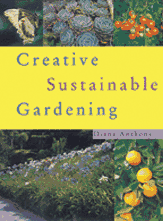Permaculture is a coined word derived from two words: permanent and agriculture. The principles on which the system is founded are simple universal truths. To discover these truths we've only to look at the ecosystem of an ancient forest, which has survived for thousands of years without any help from man. Natural ecosystems are made up of millions of elements - trees, shrubs, birds, mammals, insects, fungi, and people, and this diversity is essential for their survival. Each element within each ecosystem has many roles and is supporting a number of other elements. Each large tree provides homes for a multitude of birds, insects, plants and other creatures. It provides leaf mould to compost the forest floor, which, in turn, supports creatures that eat decaying vegetation, and nourishes the seedlings that spring up to regenerate the ancient forest. The forest itself provides shelter to man and provides him with wood for building homes and fuel for cooking. Within an ecosystem such as this, a diverse range of elements are interconnected to meet each other's needs perfectly, and there is always a zone pattern.

|
|||||

|

|

|

|

|

|
|
|
|||||
|
200309 |
||
|
|
||
|
Extract
Practising Permaculture
Mutual Benefit
Guilds and zones
Under the permaculture system, each area of the garden, no matter how small, is referred to as a guild. A guild does not stand alone and separate. Each flows into the other and each is located so that it has a symbiotic relationship - to interact, help and be part of the other. Permaculture guilds bring plants, animals and human beings into close and mutually advantageous association. The guilds are designed under a simple zoning system. This starts with zone zero - the house. It is the centre of activity and should be designed to suit the occupants' needs, to be energy efficient and to be as low maintenance in style as possible. Many homes are now being built not of timber but of natural materials native to the area; for example, mud and clay-brick houses, which are warm in winter and cool in summer, and which integrate harmoniously with their natural landscape. The ideal permaculture system harnesses energy from renewable biological sources which can be recycled on site - wind, water and sun power. This includes fuel and human energy. However, for many of us, the constraints of geographical situation and climate do not allow this. Only those of us fortunate enough to have sufficient land can use wood grown on a sustainable basis (immediate replanting after felling) to heat our homes and cook our food. But what we can all do, whether rural or city gardeners, is to save power and energy by installing solar heating devices on our homes, and utilising water in the most efficient and economical manner possible. Energy efficient planning is crucial and it is important for designers of modern homes and their occupants to know how to harvest, use and store solar energy and to use and conserve water wisely. Many of the homes coming off architects drawing boards for the twenty-first century will be designed with alternative water storage systems and with composting toilets. Modern composting toilets bear no resemblance to the malodorous old 'long drop', are efficient and aesthetically pleasing, and are widely used in permaculture and sustainable systems for manure. They are becoming an increasingly popular feature in holiday and rural homes.
Getting Started
So where do we start? We'd like a small orchard. The fruit trees need nutrients, fertiliser and pest control. We supply both by putting in a companion planting system beneath the trees, together with a few pest-patrol chickens - and ducks if we're rural dwellers. The poultry needs feeding p the plants and pests feed them. We need a small pond for the ducks. The water area, no matter how large or small, and with or without ducks, gives us pleasure to behold; it will quickly attract an eco-system of insects, plants and animals of its own as part of the harmonious whole. The system as already becoming energy efficient, because we are employing agents other than ourselves to do the work. They are natural agents, each helping and interacting with the other. Nothing exists alone. Everything has its own intrinsic value and is part of a whole. Permaculture attempts to bring all the elements together as a sustainable whole.
|
|
|
|
上に戻る |
||

|

|

|
|
